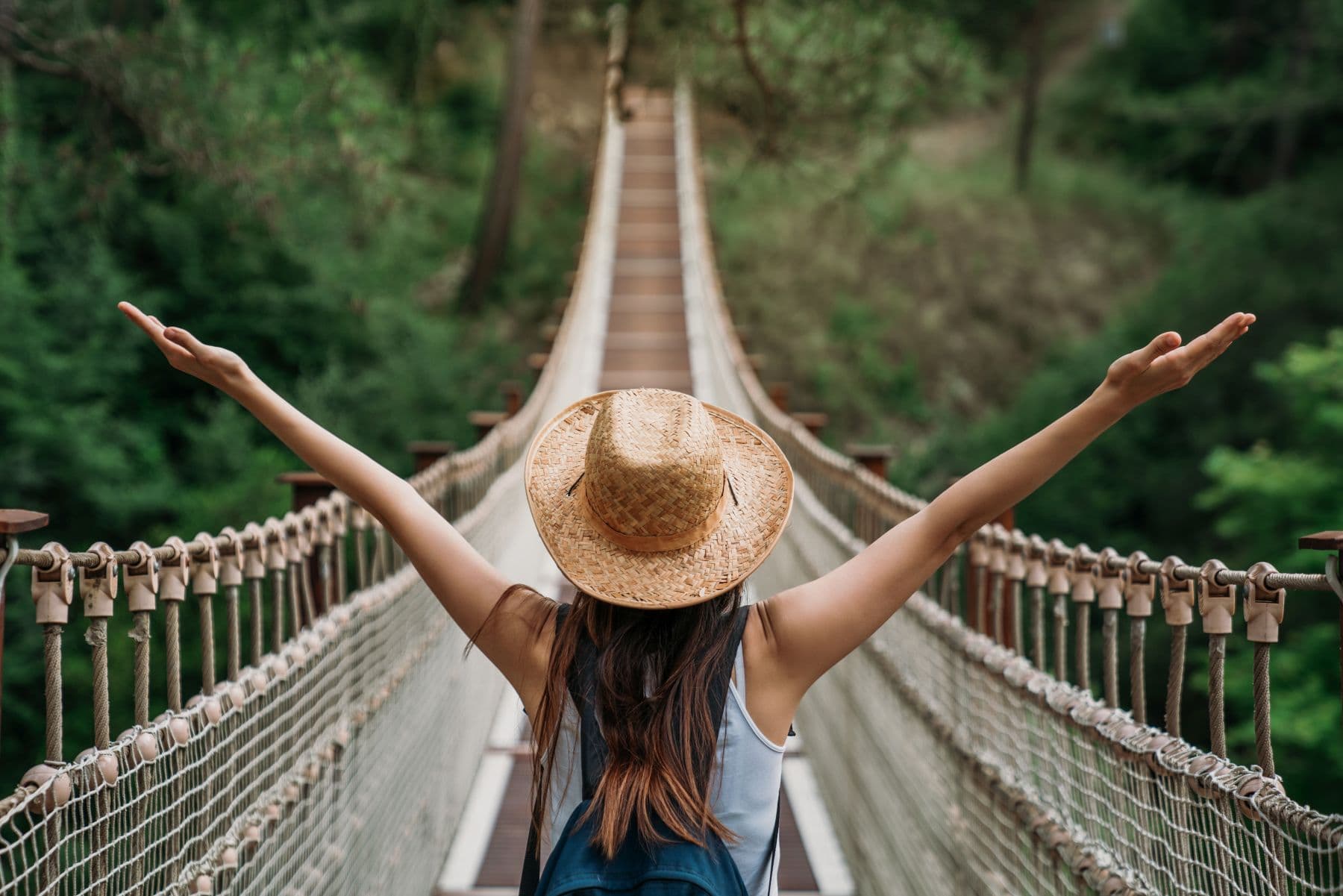5 zasad udanej wycieczki

Okres wiosenno-letni sprzyja zwiększonej aktywności na świeżym powietrzu. Doskonałym sposobem na aktywne zagospodarowanie czasu jest wybranie się na wycieczkę. Forma, środek komunikacji, długość trasy czy tematyka zależą od indywidualnych preferencji oraz wieku i możliwości uczestników. Niezależnie jednak czy wybierzemy się na kilkudniową wyprawę rowerową, pieszą wędrówkę czy samochodową wycieczkę do zabytkowego miasta, warto pamiętać o kilku podstawowych zasadach planowania. Zachowując te reguły, możemy być pewni, że nasza wyprawa dostarczy uczestnikom niezapomnianych wrażeń i emocji oraz będzie realną promocją turystyki i krajoznawstwa. Poznajcie 5 zasad udanej wycieczki.
1. Trasa
Wybór trasy powinien przede wszystkim uwzględniać wiek i kondycję uczestników lecz także środek komunikacji. Gdy planujemy na przykład wycieczkę rowerową, warto zadbać, aby trasa prowadziła głównie drogami rowerowymi lub drogami o niskim natężeniu ruchu samochodowego. Dobrze jest też uwzględnić wygodne leśne lub polne drogi tak, abyśmy nie musieli przeciskać się wąskimi ścieżynkami lub pokonywać kilometrów w piasku czy błocie. Dobrym pomysłem i oznaką profesjonalizmu ze strony organizatora jest również wcześniejsze sprawdzenie oferowanej trasy, aby ją poznać i wykluczyć ewentualne przykre niespodzianki – remonty czy nieprzejezdność dróg. Kolejnym aspektem, który warto przemyśleć jest plan czasowy – zaplanowane postoje, miejsca na ciepły posiłek, przydrożne sklepy lub stacje benzynowe. Dobrze zaplanować również pewien zapas czasu tak, aby nie zabrakło go na zwiedzanie i korzystanie z atrakcji. Najgorsza jest konieczność pokonywania trasy w pośpiechu.
2. Atrakcje
Wybierając się na wycieczkę z dziećmi, koniecznie trzeba uwzględnić w planie atrakcje. Sam spacer po lesie atrakcją nie jest, ale jeśli zaplanujemy wędrówkę nieznanymi ścieżkami połączoną z poszukiwaniem unikalnych roślin czy owadów, poszukamy wspólnie ciekawych widoków i zjawisk, wycieczka stanie się ciekawa i satysfakcjonująca. Na wycieczkach do miast należy pamiętać, że dzieci od muzeów i kościołów wolą Aquaparki i place zabaw, zatem warto uwzględnić w programie wizytę w takich miejscach.

Gdy organizujemy wycieczkę tematyczną, atrakcje i miejsca, które będziemy odwiedzać po drodze powinny przede wszystkim nawiązywać do tego tematu. Na przykład, gdy planujemy wycieczkę przyrodniczą, atrakcje powinny być miejscami edukacji przyrodniczej, pomnikami przyrody. Gdy chcemy zorganizować wycieczkę historyczną lub pielgrzymkę – wówczas planujemy zwiedzanie przede wszystkim zabytków historycznych lub obiektów kultu itp.
3. Bezpieczeństwo
Najważniejsza rzecz zarówno z punktu widzenia organizatora, jak i uczestnika to prawidłowo skonstruowany regulamin wycieczki. Przejrzyste zasady są niezwykle pomocne i gwarantują powodzenie całej wycieczki, pozwalają uczestnikom odpowiednio się przygotować i nastawić na to, co jest dozwolone, a co nie. Z drugiej strony rzetelnie opracowany regulamin może skutecznie ochronić organizatora przed ewentualnymi zastrzeżeniami i reklamacjami ze strony uczestników. Sprawdzenie listy obecności, odliczanie uczestników po każdym postoju i przed wyruszeniem w dalszą drogę jest obowiązkiem organizatora i bardzo ważnym aspektem z punktu widzenia bezpieczeństwa osób biorących udział w wyprawie.
Prawidłowo wyposażona apteczka i niezbędny sprzęt serwisowy to podstawowe elementy zabezpieczenia na trudne sytuacje w trasie. Warto również pamiętać, że istotną rolę odgrywają umiejętności przewodnika – ważne, aby była to osoba, choćby w podstawowym stopniu, przeszkolona z pierwszej pomocy. Gdy mamy do czynienia z wyprawą rowerową, podstawowe umiejętności serwisowe, którymi dysponuje przewodnik będą pracowały wyłącznie na powodzenie całej wyprawy i profesjonalny wizerunek organizatora. Oczywiście przed wyruszeniem należy zadbać o właściwy stan techniczny środka komunikacji, którym będziemy się poruszać, a także o właściwy ubiór, buty i indywidualne wyposażenie uczestników.
4. Ubranie
„Nie ma złej pogody na wycieczkę, są źle ubrani wycieczkowicze” tak można sparafrazować znane powiedzenie. Najważniejsze są buty – muszą być sprawdzone i wygodne. Gdy zaczną uciskać lub, co gorsza, obcierać – szybko odbiorą radość z wyprawy. Odzież należy dobrać do sezonu i pogody panującej danego dnia – jeśli wycieczka odbywa się w chłodnych miesiącach, warto ubrać bieliznę termoaktywną, a jeśli w cieplejszych – nakrycie głowy czy kurtkę przeciwdeszczową. Niezależnie od pory roku, w plecaku dobrze jest mieć zapasowy komplet ubrań dla dziecka. W końcu na wycieczkach zdarzają się różne przygody. Dobrym pomysłem jest również strój „na cebulkę" – dzięki niemu możemy łatwo manewrować warstwami odzieży podczas drogi, co oczywiście poprawi komfort i doda satysfakcji z udziału w wyprawie.
5. Ekwipunek
W plecaku należy mieć odpowiednie wyposażenie, które powinno być zawarte w regulaminie wycieczki – organizator nie może zakładać, że to, co jest oczywiste dla niego, będzie również oczywiste dla uczestników wycieczki. Z tego powodu, takie elementy jak:
- butelka z wodą,
- przekąski,
- ładowarka do telefonu,
- kurtka przeciwdeszczowa,
- nakrycie głowy,
- krem z filtrem,
- inne elementy wyposażenia
powinny zostać zarekomendowane uczestnikom przed wycieczką. Pamiętajmy, że w sytuacji wycieczki problem uczestnika jest również problemem organizatora – warto więc zaoszczędzić wszystkim niedogodności.

